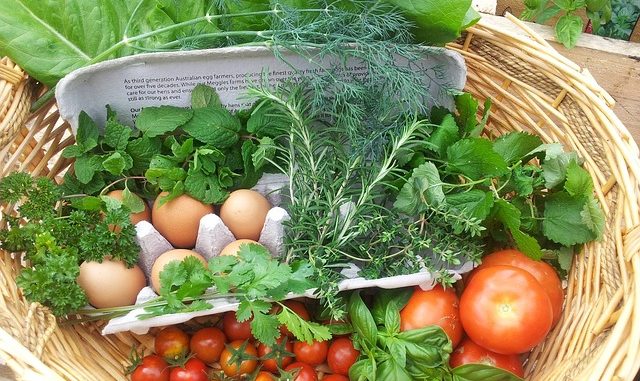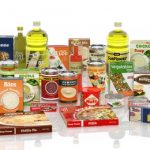
Food sustainability is probably the buzz term of the food industry and certainly gets fair exposure on news bulletins. We look at some of the underlying aspects of this topic and what it means to the food industry and its relationship with the consumer.
In basic terms there are really only two main sources of food – plants and animals. Bacteria and fungi make up a small percentage although in their own right exploiting fermentation has generated some of the most interesting foodstuffs and flavours known to man.
If you look at all the food in the world there are some surprising facts. We know now that there are 30,000 plant species which can be eaten – not all the parts but enough to add variety. Of the staples, only 15 plants and 8 animals supply 90 per cent of all our food. Half the calories eaten in the world come from three plants – wheat, corn and rice which are primarily grains. If you are wealthy enough, the top third in the economic chain will be able to eat meat of some sort.
Plants are increasingly viewed as our most important food resource. Most animals and certainly all the herbivores rely on plants for food. Even the carnivores must rely on plants indirectly to feed the herbivores on which they very often prey.
The plants themselves can be divided into vegetables, fruits and seeds.
Feeding Global Populations
The US Census Bureau provides figures for an International Database which shows that by 2020 we will have reached a global population of 7.5 Billion and that by 2040 the population will have grown to marginally under 9 Billion. In 2050, if the rate continues, the population reaches an estimated 10 Billion . Even at the current level, there is just about enough food for 1 meal although its nutritional content on average will be disputed. Given there is a general uneven distribution of food about 800 million people probably go hungry every day. In that population of hungry people, 170 million are children under the age of 5.
The issue of hunger does not recede with increasing population and only worsens. Feeding 9 Billion adequately becomes a serious challenge and is a tipping point in various parts of the world.
Income Distribution
One of the factors responsible for food hunger is that 20 per cent of the world’s population must live on the equivalent of 1 US dollar every day. Then you find that roughly 50 per cent earns less than 2 US dollars a day. The surprising finding is that the income of the richest 1 percent equals that of the poorest 57 per cent. With increased income comes an increase in the quantity of all resources consumed. We already know that this includes a rise in the amount of energy and protein sources from animals.
The point here rather convolutedly is that income distribution is probably not feasible given the current world structure. Does the answer lie in food sustainability ?
Sustainable Food
The concept of sustainable food is the idea that it is possible to continue producing food for all. It also includes how it is distributed and consumed.
The main factors of food sustainability are:-
- Reduced environmental impact
- Climate change
- Improved and sustainable farming
- animal welfare
Most nations, consumers and retailers think that sustainable food production will be the topic of 2019. For most retailers this comes in the face of increasing consumer demand for plant-based foods rather than meat.
The positive view regarding consumer trends is that we are growing our awareness of environmental issues. Coupled to this is greater scrutiny of how we produce meat products around the world, what we catch in the sea and how we produce dairy products. Awareness of some of the shocking features of how animal food is produced has led to a rise in vegetarianism and more so in veganism. In the UK, the number of people who see them selves as vegan has risen by 350 per cent since 2008 according to the Vegan Society. Those trends are repeated across the global although in many cases we’ve already stated that a vegan diet may be the only source of nutrition.
The World Resources Report: Creating A Sustainable Food Future has come up with a five-course menu of solutions that will feed the planet without encouraging more deforestation, exacerbating poverty or increasing emissions to fuel climate change. The three main ‘gaps’ that must be filled by 2050 are:-
- More land must be placed under cultivation which implies reducing the land available for building and large industry. To fill the ‘land’ gap means about 590 million hectares of additional farming land is needed. That is twice the size of India according to some statistics.
- More crops need to be grown to meet a ‘food’ gap. Roughly 56 per cent more crops have to be grown than in 2010 to generate the calories needed.
- The global environmental gap means that warming must not increase more than 1.5 Centigrade. That means managing agriculture more effectively and reforesting vast amounts of agricultural land.
The Role Of Farmers
Farmers and anyone involved in agriculture are key stakeholders in sustainability. Charles Baron who is cofounder of Farmers Business Network stated that “Farmers are the most important stewards of the land, and it’s vital they have the tools and markets to farm sustainably and be profitable in doing so”. There are organisations like FBN committed to helping farmers identify new opportunities so that crops can be developed responsibly and that they can employ sustainable practices to satisfy consumer demands.
The Role Of Consumers
Consumers in more wealthy countries are becoming much more aware of food systems. It isn’t just about price anymore although that plays a role in consumer choice. Nowadays they are focusing increasingly on food ethics and particularly retailing which we cover briefly in a moment. Given the current trend the consumer of tomorrow may well make their food choices purely on how the food was obtained, from where it has travelled to how it is packaged and what it can do from a health perspective.
A 2017 Unilever study showed that 33 per cent of consumers are currently choosing their brands on levels of sustainability. For a big food business like Unilever, such findings need to be noted when devising marketing strategies to keep or drive up new custom. It seems that 58% of UK purchasers ‘feel better’ (perhaps more self-righteous) when purchasing sustainably sourced foodstuffs. The effect is even higher and more pronounced in consumers in emerging markets. Based on calculation there is a great big opportunity to be tapped into which is estimated to be worth 966 billion Euros if the food producers can make it clear to the consumer they have solid sustainability credentials.
Consumer Beliefs – Their Choices Directly Impact the Environment
In the current climate, over 4 in 10 consumers now increasingly believe more than ever their food and beverage choices are impacting the environment. Half of Americans agree too that if it were easier to understand the actual impact of their choices, it would have a greater influence.
Organic Food And Food Sustainability
The way food is produced means organic food production became an even hotter topic. The food market research group Ecovia Intelligence thinks the sale of organic food will become mainstream. Consumer behaviour is certainly backing this trend. The European Parliament believes organic food sales in Europe are rising very fast. Income from organic products increased by 47.7% between 2012 and 2016 to a figure of 30.7bn euros. That trend continues to rise irrespective of food costs.
Big Food Behaviour
Large food producers and manufacturers are looking to change their profile with the consumer. That means investment and acquisition of businesses involved in the food sustainable culture. Unilever bought The Vegetarian Butcher in late 2018 because it is a meat-free producer. Another approach is to ally with a charity or non-profit organisation and promote their activities. It adds valuable kudos and marketing power to the message that a large corporation cares about world food production irrespective of any cynicism.
Tyson Foods announced in 2019 they will join up with the US non-profit organisation Environmental Defense Fund (EDF). The intention is to work with farmers to improve environmental practice over 2 million acres of corn production by 2020.
All these food enterprises are likely to be attractive to large food businesses who need to change consumer perception of the type of business they are. It’s also worth saying that palm oil will continue to be removed and there must be a large question mark over biodiesel and biofuel if more agricultural land is needed.
Big food groups do need to manage their expectations when it comes to implementing a sustainable food strategy. As some commentators put it, a food producer and retailer will not be able to double the sales of their food overnight, nor significantly reduce their costs. They do have the potential to increase sales, to reduce ‘some’ cost and become trusted as an ethical producer. That could mean entering or accessing new markets and improving market share. It might also be possible to reverse the trend of loss of respect in the food industry.
Ethical Retailing
A lot of pressure from consumers is placed on retailers to make their practices more consumer friendly. This translates into plastic-free aisles for example which was a measure introduced by a Dutch retailer EkoPlaza. Zero waste, zero landfill and plastic free initiatives will become a mantra for many grocery stores.
Food Waste
Most governments spurred on by their populations would like to see food loss and wastage reduced considerably. Popular nature programmes showed how plastic packaging and particulates are accumulating in the world’s oceans. Land fill sites are running out of space. The pressure from increased taxes for waste removal means that food businesses are now looking at how they can reduce packaging waste and introduce new types of packaging which is compostable and biodegradeable.
References
https://www.wri.org/our-work/project/world-resources-report/world-resources-report-creating-sustainable-food-future

Leave a Reply